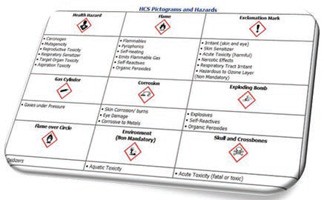The Change in MSDS

By Brianne McCurley
Material Safety Data Sheets (MSDS), a popular tool used in the classroom by science teachers to identify the risk of hazardous chemicals in lab experiments, will be changing later this year to address potential hazards of inconsistent information. MSDS are defined by the Occupational Safety and Health Administration (OSHA) as safety documents that contain data about the physical properties of a particular hazardous substance. They are designed to present consistent information to the end user. MSDS are required to be written for a variety of materials including chemicals, compressed gases, flammable and combustible liquids, oxidizing materials, poisonous or infectious material, corrosive material and dangerously reactive materials. Currently, the wording in an MSDS can vary depending on the manufacturer and who authored it. This issue not only affects science teachers in the United States, but end users throughout the world.
OSHA hopes to address potential hazards of inconsistent MSDS with a rule change to the Hazard Communication Standard (HCS). The HCS is a national standard that addresses chemical management and employee safety. The revised HCS will adopt the Global Harmonized System for the Classification and Labeling of Chemicals created by the United Nations to provide a global standard for safety hazards. This new rule will replace MSDS with Safety Data Sheets (SDS) and standardize hazard classification, labels and information and training throughout the United States, European Union and Asia Pacific.
The 16-section format established by the American National Standards Institute (ANSI) standards for preparation of SDS allows the end user to better understand and locate important safety and health information.
The 16 sections are as follows:
- Identification
- Hazard(s) identification
- Composition/information on ingredients
- First aid measures
- Firefighting measures
- Accidental release measures
- Handling and storage
- Exposure controls/personal protection
- Physical and chemical properties
- Stability and reactivity
- Toxicological information
- Ecological information
- Disposal considerations
- Transport information
- Regulatory information
- Other information
The new regulations will force companies to author new SDS, create new safety labels and update entire MSDS libraries, but will help science teachers become more conscious and educated on the dangers and risks of hazardous chemicals in the laboratory.
Classroom Discussion
- Why is it important to have consistent and standard Safety Data Sheets throughout the world?
- What type of companies would benefit from SDS?